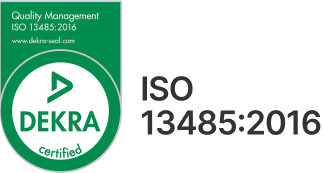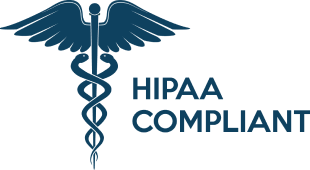A New Way to Improve Medication Adherence
Medication adherence, defined by the American Medical Association as patients taking at least 80% of their prescribed medications, has a tremendous impact on treatment success, hospital readmission rates, chronic disease management, and healthcare costs. According to a study on The Unmet Challenge of Medication Nonadherence, medication nonadherence accounts for over 100,000 preventable deaths and $100 billion in preventable medical costs each year. Moreover, while nearly 50% of treatment failures and 25% of hospitalizations can be traced to nonadherence to prescribed treatment, medication adherence is associated with better clinical results for chronic disease management and reduced mortality due to chronic conditions.
To watch the webinar that inspired this blog post on medication adherence, please go here.
Despite the overwhelming impact of medication adherence on patient health and healthcare costs, the CDC reports that one in five new prescriptions are never filled. Likewise, a study conducted at the University of California, San Francisco School of Medicine reports that only 50-60% of patients, including those who have good insurance and drug benefits, with chronic conditions like diabetes or hypertension are adherent. With such far-reaching effects, why aren’t patients adhering to prescribed medications and what can be done to improve their adherence rates?
What Factors Influence Medication Adherence?
According to the CDC, medication adherence is influenced by a number of factors across the continuum of care, including patients, providers and healthcare systems.
- Patient centered factors may be both intentional and unintentional. Some patients report an active decision to stop or modify treatment due to beliefs and attitudes about their disease, side effects of medication, expectations for improvement, and financial concerns. Obstacles that lead to unintentional nonadherence include failure to engage patients in treatment decisions, impaired cognition of patients, and mental health problems.
- Provider related factors include lack of communication between patients and caregivers, coordinating care between multiple providers and complicated treatment regimens.
- Healthcare system related variables include costs of medications, unclear instructions and labeling of medications, and insufficient time spent communicating with patients about treatment risks, benefits and alternatives.
To successfully improve patient adherence to medication, efforts should be directed towards each component of the healthcare continuum mentioned above. Methods shown to be effective in helping patients increase adherence to medication include educating patients about treatment regimens while helping them make intake a part of their daily routine, increasing team-based care, and “using health information technology tools to improve decision making and communication before and after visits.”
Using Video-based Vital Signs Monitoring to Improve Medication Adherence
Using Binah.ai’s video-based vital signs monitoring from smartphones, patients can attach medication intake to daily vital signs monitoring in return for several benefits. First, this can enable them to track improvements or ensure health maintenance, while also alerting them to any changes that ought to concern them. Studies have shown a “direct relationship between the patient’s sense of empowerment and self-efficacy and his/her medication adherence.” By providing patients with a way to measure their health daily, payers and providers can empower patients to take control of their health through self-monitoring.
Second, while learning about their own health, they can also provide doctors with access to their vital signs on a daily basis, enabling providers to receive real-time updates on patient health conditions, identify patterns, and detect health issues in time for early intervention. While giving doctors the data they need to better understand their patients, this can also help combat an issue proven to be a barrier to medication adherence: poor practitioner-patient relationships. Having patients implement daily vital signs monitoring can enable practitioners to receive notifications about nonadherent patients, so that they can follow-up with patients to trace the cause of nonadherence and work together with the patient to treat his/her concerns and find a better solution.
In a study that gained Reliant Medical Group, a Massachusetts-based multispecialty group practice, recognition as Million Hearts Hypertension Control Champion, hypertension control rates were reduced from 79% to 68% by having patients self-monitor blood pressure and upload results to EHRs. Providers were able to reference this data during office visits to see whether hypertension was controlled. In cases where hypertension was not controlled, providers were able to discover whether causes included nonadherence and explore lifestyle changes or alternative medications if nonadherence was not the cause.
Video-based vital signs monitoring can also be integrated into an app that provides the patient with reminders about taking medications and filling prescriptions and enables the patient to track whether s/he has done so. An app like this would provide patients with an entire infrastructure to track their treatment and results. This can be especially helpful for chronically ill patients who need to take several medications (with increased frequency as well), a need that has been proven to reduce the likelihood of adherence.
Binah.ai’s Video Based-Vital Signs Monitoring From a Smartphone or Laptop
Binah.ai enables video-based vital signs monitoring from a smartphone, tablet or laptop. Available as an incredibly easy-to-integrate SDK or a ready-to-use app, Binah.ai’s video-based vital signs monitoring allows users to measure heart rate, heart rate variability, oxygen saturation, respiration rate and mental stress levels from a smartphone, tablet or laptop, just by looking at the camera. Binah.ai’s remote vital signs monitoring supports iOS and Android mobile devices and Windows 10 desktops and laptops.

 close
close





